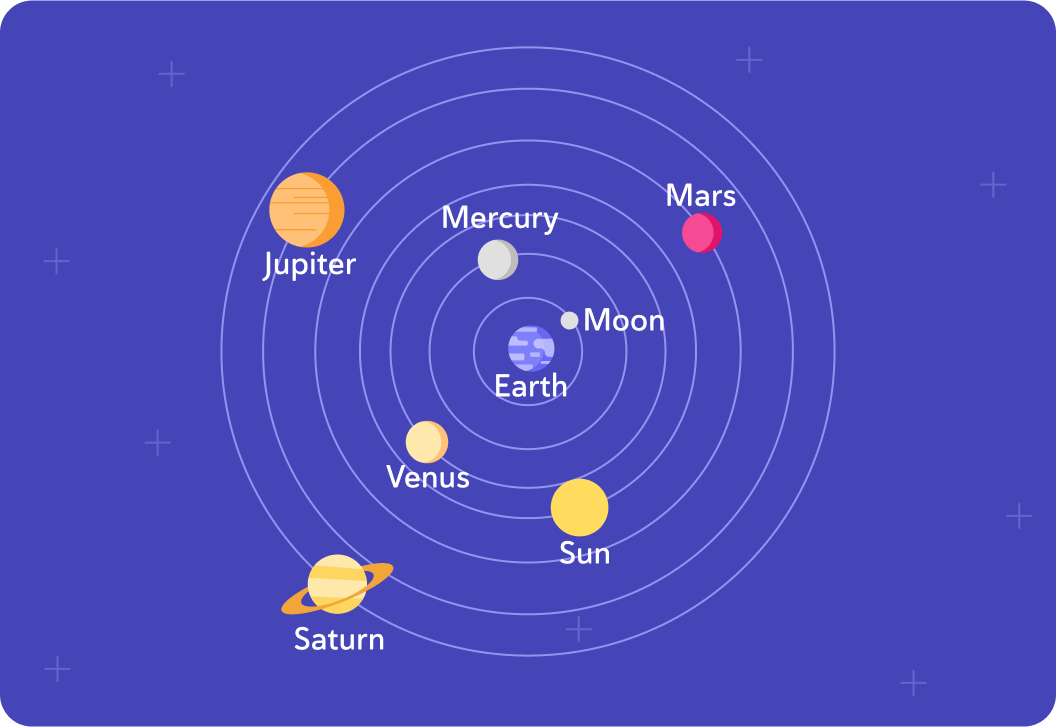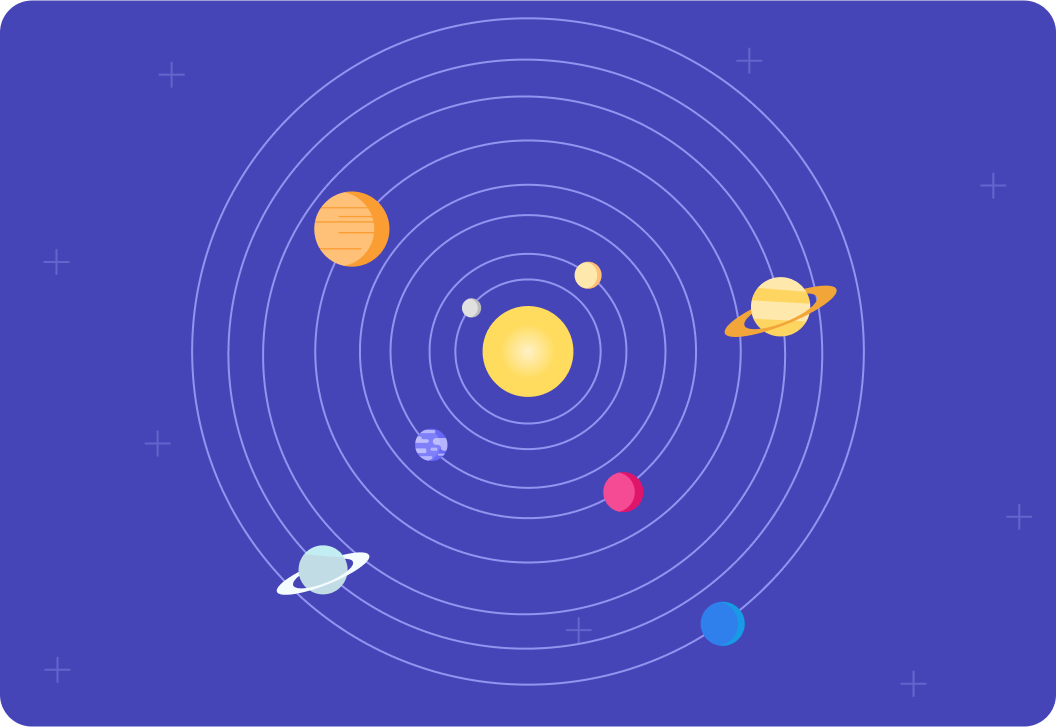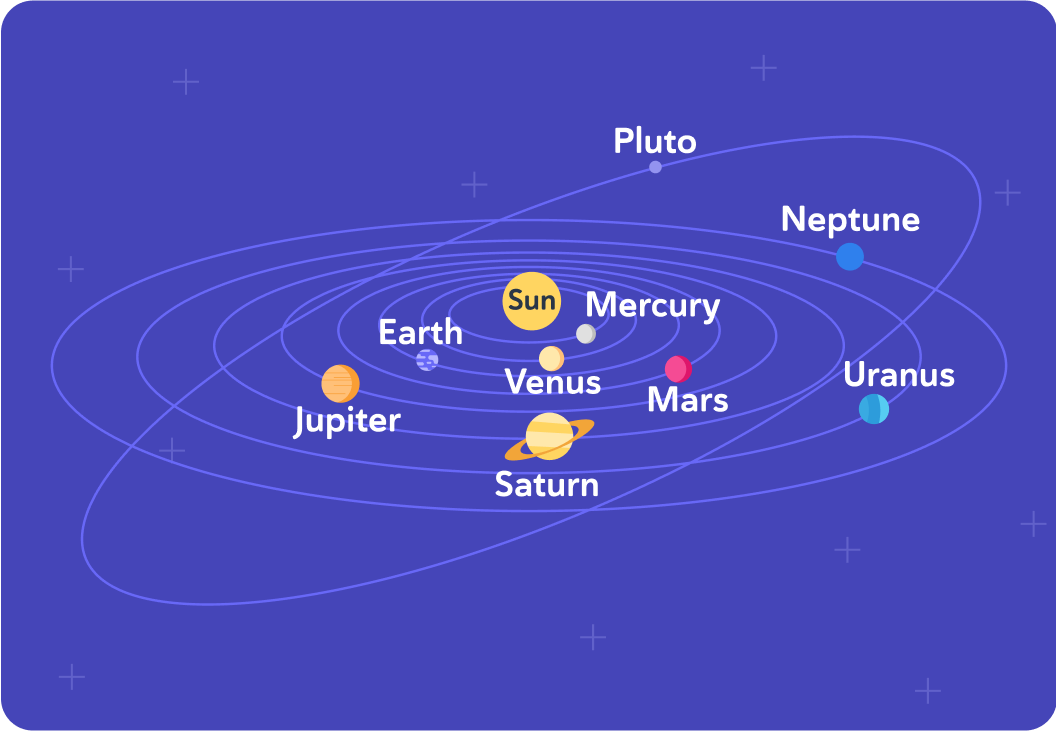YOU ARE LEARNING:
How the Model of the Solar System Evolved

How the Model of the Solar System Evolved
Our model of the Solar System has come a long way, from Ptolemy's geocentric model to Galileo's heliocentric model and Kepler's elliptical orbits.
Do stars stay in the same place in the sky throughout the night or do they move?

The Earth is spinning at around 1,000 mph and it is orbiting the Sun at around 67,000 mph, but do we feel that here on Earth?

So we can see the stars move and it feels a lot like Earth is staying still. How do you think the first astronomers explained the fact that stars appear to move across the night sky?

The first astronomers thought stars were orbiting Earth and that Earth was at the centre of the Universe
We call this model the geocentric model - "geo" means Earth, and 'centric" means central.

It was a greek astronomer who formulated the geocentric model that was most popular in ancient times. Who do you think it was?
A) Einstein B) Newton C) Ptolemy


So Ptolemy's geocentric model said everything orbited in perfect circles around the Earth.
The Earth was at the centre of the Universe and in the background there was blanket of stars that were fixed.

Now, this shows the movements of the planet Mars over time.
At some point, it looks as if Mars starts to loop backwards! We call this kind of motion retrograde motion.

Does this evidence fit with what the geocentric model said about planets orbiting the Earth in perfect circles? Answer yes or no.


So why does it look like Mars is moving backwards?
Earth orbits the Sun faster than Mars because we're closer to the Sun. So at some point, we actually undertake Mars. That makes it look like Mars starts to move backwards in the sky.

It's a bit like if your car overtake another car
When you look in the rear mirror, it will look like the car you overtook is moving backwards, but you know of course that it is still moving forwards. It's just that you're moving faster.

Ptolemy's geocentric model survived from ancient times to the 16th century!
But then it was replaced by a different model.

What was at the centre in this new model?


The model that replaced the geocentric model placed the Sun at the centre
We call it the Sun-centred model.

The first person to disagree with Ptolemy's model was the polish astronomer, Nicolas Copernicus. He suggested a Sun-centred model to explain the retrograde motion of Mars. Do you think many people believed him? Answer yes or no.


People were not keen on letting go of the idea that Earth was the centre of the Universe
So not many people believed Copernicus's theory that the Sun was the centre of the Universe.

Jupiter's Moons
But then came Galileo Galilei (1564-1642), who made many observations including spotting Jupiter's moons. What do you think this was evidence for?

Galileo thus provided more evidence which showed that the Earth was not at the centre of the Universe.
However, it still took some time for this to be accepted as it did not fit in well with the religious view of the Universe at the time, so it wasn't until Galileo had passed away that his works were valued greatly.
Copernicus and Galilei were not the only astronomers who challenged the geocentric model
The German astronomer, Johannes Kepler, showed that the paths of the plants were elliptical, not circular.

Kepler's first law of planetary motion was that all planets move in ellipses around the Sun
We call it the heliocentric model - the one where the Sun is at the centre of the orbits.

Eventually, the heliocentric model with the Sun at the centre of orbits was accepted. Today, we call this system the ________ _________.


The latin word "sol" means sun
So we call the Sun and everything that orbits it the Solar System. It is heliocentric and has elliptical orbits.
Today, we also know that our Sun is not the centre of the Universe. In fact, every other star has a similar system.

Summary
In ancient times Ptolemy proposed the geocentric model of the Universe
He proposed that Earth was at the centre and everything else orbited Earth.
In the 1500s, Copernicus suggested that in fact the Sun was at the centre, not the Earth!
He used Mars' retrograde motion as evidence, but not many people believed him.
But Galilei also provided evidence against the geocentric model
He saw that Jupiter's moons orbited Jupiter, not Earth!
Finally, Johannes Kepler also challenged the geocentric model
He showed that the paths of the planets were elliptical, not circular and that the Sun must be at the centre.
So via Copernicus, Galilei and Kepler we arrived at the heliocentric model with the Sun at the centre
This is what we call the Solar System today, where we know that it is not the entire Universe that is centred around our Sun, but that other stars have similar systems.
